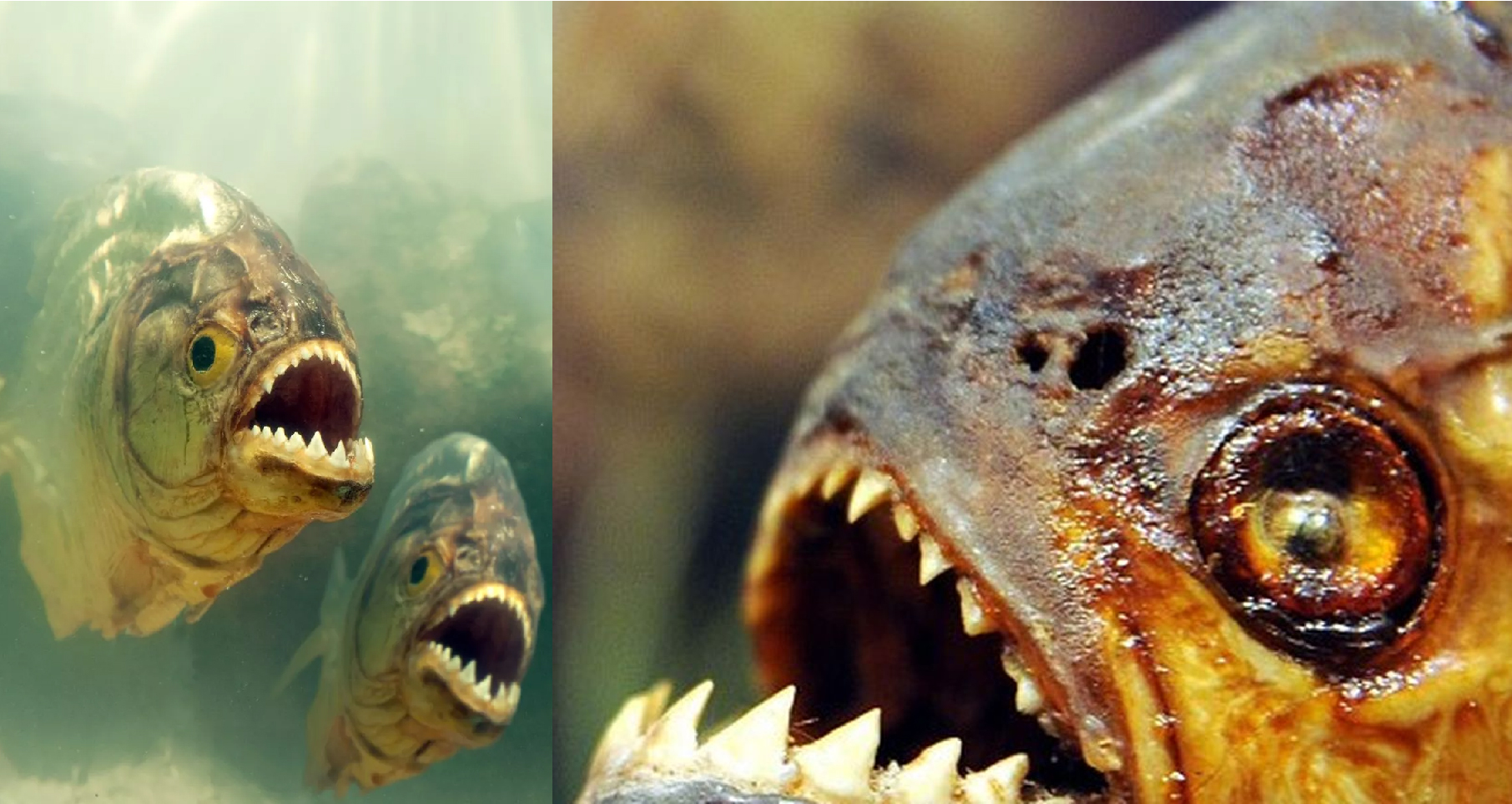Piranha fish are often the subject of fear and fascination, largely due to their portrayal in popular culture as vicious predators capable of stripping a human to the bone in mere seconds. These freshwater fish, native to South American rivers, have a reputation that precedes them, but the reality of their behavior and ecological role is far more nuanced and interesting. This article delves into the world of piranhas, separating myth from fact, and exploring their biology, behavior, and significance within their ecosystems.
The Origins and Habitat of Piranha Fish
Piranhas are freshwater fish that belong to the family Serrasalmidae, which also includes pacus and silver dollars. They are primarily found in the rivers and lakes of South America, with the Amazon Basin being their most famous habitat. The Amazon River, along with its tributaries, provides the ideal environment for piranhas, offering warm, slow-moving waters rich in vegetation and diverse aquatic life.
There are approximately 30 to 60 species of piranha, depending on the classification, with the most well-known species being the red-bellied piranha (Pygocentrus nattereri). These fish are highly adaptable and can thrive in various aquatic environments, including flooded forests, streams, and reservoirs. Their widespread presence across South America makes them a vital component of the region’s aquatic ecosystems.
Anatomy and Behavior: More Than Just Sharp Teeth
Piranhas are often recognized by their sharp, triangular teeth, which are perfectly adapted for slicing through flesh. These teeth are set in powerful jaws that can exert significant force, making piranhas effective predators. However, their fearsome reputation as relentless killers is largely exaggerated. While piranhas do possess the ability to inflict serious bites, they are not the indiscriminate man-eaters often depicted in movies and media.
In reality, piranhas are opportunistic feeders with a diet that varies depending on the species and the availability of food. While some piranhas are primarily carnivorous, feeding on fish, insects, and small animals, others are omnivorous or even herbivorous, consuming fruits, seeds, and plant matter. This diverse diet helps maintain the ecological balance in their habitats, as piranhas contribute to both the predatory and scavenging roles within their ecosystems.
Piranhas are also social creatures, typically living in schools that can range from a few individuals to hundreds of fish. This schooling behavior is primarily a defensive strategy, helping protect them from larger predators. Contrary to popular belief, piranhas are not constantly on the hunt for blood; their feeding frenzies are usually triggered by specific conditions, such as the presence of injured or vulnerable prey, or during periods of low water levels when food is scarce.
Myths and Misconceptions About Piranhas
The portrayal of piranhas as deadly, aggressive fish has been fueled by sensationalized accounts and horror films. One of the most pervasive myths is that a school of piranhas can strip a human to the bone in seconds. While piranhas are certainly capable of biting and can be dangerous if provoked, attacks on humans are exceedingly rare and typically occur under extreme circumstances, such as when the fish are starved or the water levels are critically low.
In truth, piranhas are more likely to flee from a potential threat than to attack it. The vast majority of piranha species are timid and avoid confrontation whenever possible. The idea of piranhas as indiscriminate killers is more fiction than fact, and understanding their true nature is crucial to appreciating their role in their natural habitats.
The Dangers of Piranha Fish: Fact vs. Fiction
While the reputation of piranhas as dangerous predators is often exaggerated, there are genuine risks associated with these fish, particularly in certain conditions. Piranhas have sharp, serrated teeth and powerful jaws, which can deliver a strong bite capable of inflicting serious injury. In the wild, piranhas are usually timid and avoid human contact, but they can become aggressive under specific circumstances, such as when food is scarce or during the breeding season when they are protecting their nests.
One of the most potentially dangerous situations involving piranhas occurs during the dry season in the Amazon, when water levels drop, and food becomes limited. In these conditions, piranhas may become more aggressive and are known to engage in feeding frenzies if an opportunity arises. These frenzies can be dangerous if a person or animal enters the water, particularly if there is blood present, which can trigger the piranhas’ predatory instincts.
While attacks on humans are rare, they do occur, and in some cases, can result in significant injuries, particularly to the extremities. Swimmers in piranha-infested waters should exercise caution, especially in areas where the fish are known to be more aggressive or during times of environmental stress, such as droughts. Understanding the conditions that can lead to piranha aggression is crucial for avoiding dangerous encounters with these otherwise fascinating creatures.
The Ecological Importance of Piranhas
Despite their fearsome reputation, piranhas play a vital role in the ecosystems of South American rivers. As both predators and scavengers, they help control the populations of other fish species and prevent the accumulation of dead or decaying matter in the water. This scavenging behavior is particularly important in maintaining the health of aquatic ecosystems, as it helps reduce the spread of disease and recycles nutrients back into the environment.
Piranhas also contribute to seed dispersal in their habitats. Some species of piranhas consume fruits and seeds, which they then excrete in different locations, aiding in the propagation of various plant species along riverbanks and in flooded forests. This process is crucial for the regeneration of plant life in these areas, which in turn supports a diverse range of animal species.
Additionally, piranhas serve as a food source for larger predators, including birds, mammals, and even humans. In many parts of South America, piranhas are caught and consumed by local communities, providing a valuable source of protein. This interplay between predator and prey highlights the complex and interconnected nature of the ecosystems in which piranhas live.
Conservation and the Future of Piranha Populations
While piranhas are not currently considered endangered, they face several threats that could impact their populations in the future. Habitat destruction, particularly due to deforestation and dam construction, poses a significant risk to piranha habitats. The alteration of river systems can disrupt the delicate balance of aquatic ecosystems, affecting not only piranhas but also the myriad species that depend on these environments.
Climate change is another emerging threat, as rising temperatures and changing precipitation patterns can alter the habitats and food sources available to piranhas. Additionally, overfishing in some regions has the potential to deplete local piranha populations, particularly in areas where they are a popular food source.
Conservation efforts aimed at preserving South American river systems and their biodiversity are essential for the continued survival of piranhas and other aquatic species. Protecting these ecosystems from further degradation will require a combination of local and international efforts, including sustainable land-use practices, habitat restoration, and the enforcement of fishing regulations.
Conclusion
Piranha fish are fascinating creatures that have long been misunderstood due to myths and sensationalized stories. Far from being mindless predators, piranhas are complex animals that play an important role in their ecosystems. By controlling fish populations, scavenging dead matter, and even aiding in seed dispersal, they contribute to the health and stability of the rivers and lakes they inhabit.
Read more: Bader Shammas Net Worth: Understanding the Wealth of Lindsay Lohan’s Husband




